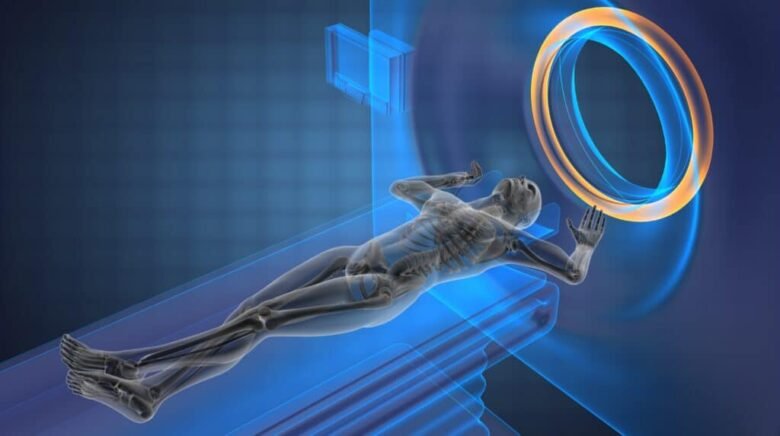Imagine walking into a place where medical imaging is no longer constrained by the limits of the traditional ways. Welcome to the world of 3D ultrasound imaging, a new technology that is changing the way diagnostics and patient care are done. This new technique provides clear images but of three dimensions, which take a better look at the human body. In changing how external structures are viewed, 3D ultrasounds are changing the practice of medicine in various disciplines.
As the healthcare sector embraces these new changes, it becomes important for both the practitioners and the patients to understand this new imaging technique. Expectant parents who wish to have a look at their baby before it is born or doctors who are scanning intricate body parts are some of the people who benefit from a 3D ultrasound This question will be explored further, what exactly sets this technology apart in the current world of diagnosis. As well as what are its advantages and disadvantages in the world of medicine as we know it.
How 3D Ultrasound Imaging is better than Traditional Ultrasound?
3D ultrasound imaging spices something new and special in the field of imaging and diagnostics. Unlike traditional 2D scans, it provides detailed three-dimensional images that enhance the visualisation of internal structures. In this way, more angles of complex structures may be examined and understood in a much better manner than before.
Because healthcare practitioners use this technology, their chances of making a mistake are greatly reduced. It also makes it possible for timely treatment to commence whenever it is needed. This technology is advantageous to the patients as well. The three-dimensional images make it easy for the expecting couples to appreciate their child before birth, as they are able to see more than what the normal black-and-white images provide.
Also, the 3D ultrasound imaging examinations do not require much manual control during the examination. This shortens the time needed for the whole examination, which increases the comfort and general patient experience while facilitating smoother work in medical institutions. The combination of accuracy and being easily available makes 3D ultrasound one of the most important components in modern healthcare. Its pros are changing the way practitioners deal with diagnostics today.
Uses of 3D Ultrasound Imaging in Medical Diagnosis:
In the area of medical diagnosis, 3D images using ultrasound have made breakthroughs in several events. The first one that turns out to be rather important is obstetrics, where would-be parents get the chance to see the physical details of John or Mary’s unborn baby. This technology also helps to boost emotional attachment and offers detailed information on fetal growth and development.
Apart from having a big role in pregnancy, 3D ultrasound also has a lot of significance in the field of cardiology. It makes it possible for physicians to get a complete understanding of the heart’s structure as well as its mechanism. This initiative helps in improving the diagnosis of congenital heart defects or other heart-related complications. In musculoskeletal medicine, 3D imaging helps practitioners evaluate soft tissue damage as well as joint irregularities. The method of comprehending structures from various perspectives turns out to be extremely beneficial for the advancement of various treatment techniques.
Besides that, this new approach has become more popular in the field of oncology for cancerous growth assessment. By having an insight into the area around the tumor, its circumference, and its growth, hospitals can create cancer-specific goals aimed at targeted treatments.
What Lies Ahead: 3D Ultrasound Imaging
A lot of expectations in the 3D ultrasonic imaging domain should be more emphasis placed on resolving the future of the 3D lens along with providing innovations. Resolutions and image quality are still subject to many expectations considering the traits of the developing technology. Further developments in procedures will allow seeing surgical areas at the moment of occurrence.
The most obvious advantage is the combination with artificial intelligence. Image scans may be fast-tracked by radiologists guided by AI algorithms, enabling better absolute accuracy. It will not only enhance the speed of diagnostics but also lessen human mistakes.
Also, portable ultrasound devices are gaining momentum. These special instruments make it possible to carry advanced imaging directly to the unreachable or urgent areas where the regular apparatus may be absent. Hopefully, with the advancement of research, new applications will start to appear in many other specialties within medicine. As this technology develops, the chances of it having great diagnostic potential and individualised treatment planning seem to be endless.
Challenges and Limitations:
Not everything is roses when using 3D imaging; it has its challenges and hurdles.
- One of the biggest bottlenecks is the cost of scans. Buying advanced machines is quite expensive at times and is a drawback for several healthcare facilities.
- Training is another barrier. It remains to be seen where an ultrasound using 3D images can be accurately interpreted by 3D-trained healthcare professionals. Not all clinics can afford a broader training regime.
- Moreover, other limitations can come from the patients who need a 3D ultrasound. Overweight people or those with a lot of gas in the bowel can all affect the standard imaging.
- On top of that, they have regulatory issues. With rapidly changing technologies, there comes a challenge: how to remain compliant with the standard and apply the new systems in a way that is safe for the users of medical services.
So, even if the changes seem to offer great prospects, some parts of the medical community, on the other hand, remain sceptical due to reliability and accuracy beliefs about traditional methods.
Conclusion:
3D ultrasound imaging is changing the way health professionals think about diagnoses. It can give clear, accurate evaluations because it presents detailed, three-dimensional images. Patients are also able to see their conditions more clearly. As a result of this, treatment planners can be more effective, and the results are more favourable. As stated, the reality is that this does not mark the end of the creativity of ideas, and this does mark the start of the aiming high era.
The joining of the squeezes of artificial intelligence and machine learning could transform image analysis further. Medical practitioners will continue to look for more use over a variety of other specialities, and most probably they will have bright areas to look for. This exploration holds promise for good progress in the areas relating to patient care and diagnosis. Continuous inventiveness will shift the pre-existing dilemmas and challenges, which will ensure that 3D ultrasound continues to be one of the leading solutions in the field of medicine. Great moments are approaching with the preview of what this technology can become.
FAQs:
1. What is 3D ultrasound imaging?
3D ultrasound imaging is a more complex imaging process that uses sound waves to create three-dimensional images of the structures of the inside of the body. This is a better form of visualisation as compared to a 2D ultrasound scan.
2. How does it differ from traditional ultrasound?
Three-dimensional ultrasounds allow the operator to make structures more visible and easier to understand, together with providing a better experience and understanding to the people being described in the scan. This is in contrast with the traditional ultrasound, which revolves around the machines generating flat 2D pictures of what they scan.
3. What are the main benefits of using 3D ultrasound?
The main benefits involve correct diagnosis of different conditions, visual aiding regarding complex cases, and no invasive procedure done while being exposed to radiation. Moreover, it assists in taking clearer images of the patients and even the healthcare provider.
4. Are there any risks associated with 3D ultrasound imaging?
3D ultrasounds, when fully done, are considered safe because they employ sound waves and nonionising radiation. But as in every medical procedure, a practitioner must always assess each situation accordingly based on the particular patient.
5. Where can I find facilities offering this service?
Many 3D ultrasound applications become standard equipment at many specialised hospitals and clinics. You can ask your health provider, or if you want to search for it online, look through the registers and find a mapped area where this service is present.



